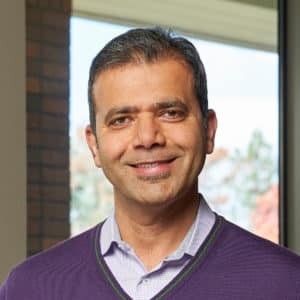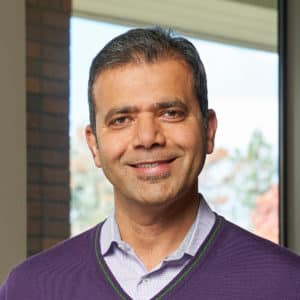In a 2016 blog post, Netflix famously detailed its seven-year migration journey to the cloud. The piece walks through the company’s then-radical decision to standardize all its IT infrastructure on Amazon Web Services (AWS), only two years after AWS had publicly launched in 2006. Like so many foundational infrastructure innovations before its time, Netflix’s effort highlighted the benefits of abstracting away certain aspects of the software-development lifecycle—in this case, where applications are run.
Forklifting all of the company’s systems, unchanged, out of a data center and into AWS wasn’t the hard part. What was most challenging about the seven-year migration was Netflix’s decision to fundamentally change the way applications were built, created, managed, and deployed. Architecturally, the company migrated its services from a monolithic app to hundreds of smaller microservices. This is what ultimately transformed Netflix into a cloud-native company. AWS may have shown us what was possible in terms of how to run applications in the cloud, but Netflix gave us the blueprint for how applications got created and deployed in a cloud-native way.
As Netflix’s architecture scaled to thousands of microservices that each performed their own specific function, the company needed a way for all these applications and services to communicate with each other so that data stored in a particular moment in time was accurate and complete; that a workflow between services completed its intended action and activity; that the workflow could be audited; and that if something happened that interrupted the workflow, the system knew how to handle errors. This came to be known as workflow orchestration.
Traditionally, application and service workflows were orchestrated in an ad-hoc manner using a combination of pub/sub, making direct REST API calls, and using a database to manage the state of these workflows. As more applications migrated from monolithic to microservice-based architectures and the coordination of workflows required choreography across multiple services, the complexity to fulfill a business function increased.
Enter Orkes*
While at Netflix, a team of engineers pioneered the solution for application and microservice workflow-orchestration, which involved open-sourcing a technology called Conductor. Companies like Tesla, GitHub, American Express, and many others across industries such as finance, healthcare, and insurance encountered the same challenges. Developers began decoupling workflow logic from application logic and Conductor became the de facto way to write, execute, visualize, and trace distributed workflows in a centralized way.
After a brief, subsequent tour of duty at companies like Uber, Google, Robinhood, and Redfin, the original Netflix team behind Conductor–consisting of Viren Baraiya, Jeu George and Boney Sekh–paired up with Dilip Lukose, who had led product teams at AWS and Azure, as he saw the same challenges of microservices orchestration solved by Conductor when he was at Redfin. Together, they founded Orkes to do for application and microservice workflow-orchestration what Netflix did a decade ago for application development: make it cloud-native.
With over five years of open-source and Netflix-scale tested technology behind it, the Conductor platform is used by companies such as Netflix for image processing and content migration; Tesla for order-management workflows; GitHub for orchestrating GitHub action tasks; Swiggy for managing its ordering system; and Oracle for powering its banking product. There are hundreds more enterprises using Conductor to build and manage workflows across cloud-native applications, and a growing open-source community with over 4,000 GitHub stars, 1,300 project forks, and 160 contributors related to the project. The demand for increased cloud support and enterprise features to enhance Conductor deployments is now being realized with Orkes’ launch.
Orkes and Netflix are working closely together to support the open-source Conductor community, both by collaborating on the Conductor OSS release roadmap, and also through events. Recently Netflix and Orkes hosted a joint meetup attended by 80+ developers from companies like GE, JP Morgan Chase, Microsoft, Salesforce, SAP, Slack, VMWare, Walmart and Zoom. There is already a lot of excitement in the Conductor community about what Orkes is doing to support them.
We are thrilled to announce our investment in Orkes as the company continues to pioneer its technology and evolve into a cloud-hosted, fully managed version of Netflix Conductor for the masses.
This material is provided for informational purposes, and it is not, and may not be relied on in any manner as, legal, tax or investment advice or as an offer to sell or a solicitation of an offer to buy an interest in any fund or investment vehicle managed by Battery Ventures or any other Battery entity.
The information and data are as of the publication date unless otherwise noted.
Content obtained from third-party sources, although believed to be reliable, has not been independently verified as to its accuracy or completeness and cannot be guaranteed. Battery Ventures has no obligation to update, modify or amend the content of this post nor notify its readers in the event that any information, opinion, projection, forecast or estimate included, changes or subsequently becomes inaccurate.
The information above may contain projections or other forward-looking statements regarding future events or expectations. Predictions, opinions and other information discussed in this video are subject to change continually and without notice of any kind and may no longer be true after the date indicated. Battery Ventures assumes no duty to and does not undertake to update forward-looking statements.
*Denotes a Battery portfolio company. For a full list of all Battery investments, please click here.


A monthly newsletter to share new ideas, insights and introductions to help entrepreneurs grow their businesses.









